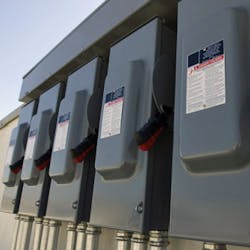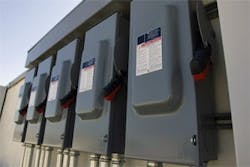Ensure machinery durability and long-term functionality
Figure 1: It’s best to keep the end location in mind while picking a circuit breaker.
Selecting the right type of circuit breaker when designing and creating heavy machinery can help you to ensure durability as well as long-term functionality of the equipment in question. It also helps you to ensure appropriate functioning of the machinery while avoiding instances of redesign due to improper spare-part selection.To select the right type of circuit breaker, you need to adhere to certain criteria, which include voltage requirements, frequency, interrupting capacity, current rating and number of poles. Apart from the usual selection parameters, you also have to account for any unusual mechanical and environmental operating conditions, regulatory and safety concerns, size constraints and cost constraints, as well as equipment testing. Some basic parameters should be kept in mind when selecting the right type of circuit breaker.
[javascriptSnippet ]
- Overall voltage rating: The voltage rating of a circuit breaker is calculated by the highest amount/level of voltage that can be applied across all the end ports, the voltage distribution type and the method through which the circuit breaker is integrated into the system. This voltage rating is important as it depicts the circuit breaker’s ability to meet the end application. Therefore, you must carefully understand the voltage rating required for the machinery in question when picking the right circuit breaker.
- Electrical frequency: Depending on the application of the machine and the current required, you must choose a circuit breaker that can handle higher currents without having to derate. The general rule of thumb when it comes to electrical frequency states that the higher the Ampere rating within a specific rate size is, the greater the derating needed. And the total quantity of derating depends on the Ampere rating, frame size and current frequency. For instance, a circuit breaker that can handle currents up to 600 A can be applied to frequencies of 50–120 Hz. Anything higher than that will require the breaker to be derated or specifically calibrated. So it is always best to consult your electrical engineer/contractor to get a better idea of the calibration setup available before making your decision.
- Maximum interrupting capacity: When selecting a circuit breaker for your machinery, you must ensure that the interrupting capacity of the breaker must be equal to or greater than the amount of fault current delivered where the breaker is applied. However, you must ensure the breaker is chosen after ascertaining the highest amount of fault current the breaker can handle as that directly showcases its maximum interrupting capacity.
- Continuous current rating: The continuous current rating of circuit breakers is rated in Amperes at a specific ambient temperature. This Ampere rating stands for the continuous current the breaker can carry in the ambient temperature where it was calibrated. Therefore, it is necessary to ascertain the calibration temperature to ensure the optimal performance of the circuit breaker.
- Location of operations: The end location of the circuit breaker also plays a critical role in selecting the right type of circuit breaker. Each circuit breaker is created for different applications in different environments that are influenced by the application of the final product. Some circuit breakers are made to suit high temperatures and altitudes, while others are created to withstand damage from corrosion and moisture. Therefore, it is best to keep the end location in mind while picking a circuit breaker (Figure 1).
- Testing parameters: Last but not the least, you must also check for proof of quality assurance to ensure long-term functionality of the machinery. Always select circuit breakers and related spare parts from verified vendors, and be sure to check for quality assurance stamps/certificates from government-approved regulatory bodies before making your decision.
Since circuit breakers are used to protect and enhance the lifespan of valuable equipment and heavy machinery, it is extremely important to adhere to these selection parameters. Not only do they guarantee long-term functionality, but also ensure that your machinery and equipment are protected from damage due to voltage fluctuations and shortcircuits. So be sure to select a high-quality circuit breaker while keeping your end application.
ALSO READ: How to protect against overloads and short circuits
About the Author
Jeson Pitt
D&F Liquidators

Leaders relevant to this article:


